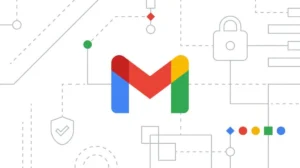Meta, the parent company of Facebook, has been leveraging its massive user base to enhance its AI capabilities. The process involves using public posts from Facebook and Instagram to train its AI models, which are integral to the personalized experience offered by these platforms.
How Meta AI Uses Your Posts
Meta AI, built with the Llama 3 architecture, is one of the most sophisticated AI assistants available today. It helps users across various Meta platforms, including Facebook, Instagram, WhatsApp, and Messenger, to plan activities, get recommendations, and even generate creative content like images and GIFs.
The data used to train these AI models primarily consists of publicly available posts. According to Nick Clegg, Meta’s President of Global Affairs, the company avoids using private messages and posts shared only with friends and family. Instead, it focuses on publicly shared content to improve the accuracy and functionality of its AI systems.
AI’s Role in Content Ranking
Meta’s AI systems are crucial in determining what content appears in users’ feeds. These systems use complex algorithms to predict which posts will be most relevant and engaging for each user. The AI evaluates various signals, such as user interactions, to make these predictions. For example, if a user frequently shares or likes a certain type of content, the AI will prioritize similar posts in their feed.
This process ensures that users see more content that interests them, enhancing their overall experience on the platform. Meta also provides tools for users to control what they see, such as the “Why Am I Seeing This?” feature, which explains why certain posts appear in their feed based on their previous activities.
Transparency and User Control
Meta is committed to transparency about how its AI systems work. The company has published detailed system cards that explain the algorithms behind content ranking and the types of data used to make predictions. These cards are designed to be accessible to users without deep technical knowledge, ensuring that everyone can understand how their data is being used.
In addition to transparency, Meta offers several tools for users to personalize their experience. For instance, users can adjust their feed preferences and use features like “Show more, Show less” to fine-tune the content they see. These tools empower users to have greater control over their social media experience.
Implications and User Awareness
While the use of public posts to train AI has its benefits, it also raises privacy concerns. Users should be aware that anything they post publicly can be used to train AI models. Meta has updated its terms of service to reflect this practice, emphasizing that users are responsible for the content they share publicly.
Moreover, the rapid advancements in AI technology mean that the lines between real and AI-generated content are becoming increasingly blurred. Meta has started labeling AI-generated images and content to help users distinguish between human and AI creations.
Meta’s use of AI represents a significant step forward in creating personalized and engaging social media experiences. By using public posts to train its AI models, Meta can offer advanced features and improve user interactions across its platforms. However, this practice also underscores the importance of user awareness and control over their data.



















Add Comment